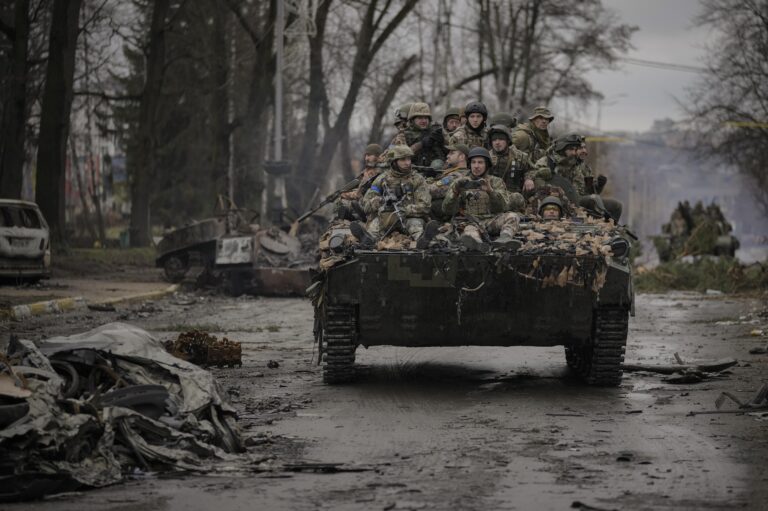British-manufactured components have reportedly been discovered in Russian drones deployed during recent attacks on the Ukrainian city of Lviv, President Volodymyr Zelensky revealed. The findings, highlighted amid ongoing hostilities, underscore the complex international dimensions of the conflict in Ukraine. This development raises new questions about supply chains and the origins of military technology used by Russian forces, as Kyiv continues to resist Moscow’s advances.
British Components Discovered in Russian Drones Targeting Lviv Raises Questions About Supply Chains
In a surprising revelation, Ukrainian President Volodymyr Zelensky confirmed that components of British origin have been identified in drones used by Russian forces in recent assaults on Lviv. This discovery has sparked intense scrutiny over the global supply chains feeding into the conflict, raising concerns about how advanced Western-made technology is reportedly ending up in Russian military equipment. Officials and experts alike are calling for a thorough investigation to trace the procurement paths and prevent further unauthorized transfers of sensitive components.
Analysts suggest that these parts, commonly used in civilian electronics and advanced consumer devices, could have been diverted unintentionally or through complex third-party networks. The situation highlights broader challenges faced by governments attempting to regulate dual-use technologies amid ongoing geopolitical tensions. Key points around these findings include:
- Potential loopholes in export controls allowing components to enter unintended markets.
- Complexity in verifying end-user certificates during international trades.
- Increasing reliance on civilian technology in modern unmanned weapon systems.
| Component Type | Origin | Typical Use |
|---|---|---|
| Microcontrollers | United Kingdom | Consumer electronics |
| GPS Modules | Multiple Countries | Navigation systems |
| Optical Sensors | Europe | Imaging equipment |
Zelensky Details Impact of Foreign Technology in Conflict and Calls for Enhanced Defense Measures
President Volodymyr Zelensky revealed that recent investigations have uncovered British-made components in Russian drones deployed during attacks on the western Ukrainian city of Lviv. This discovery highlights the complex interplay of foreign technology in the ongoing conflict and raises pressing questions about the sources and supply chains fueling Moscow’s military capabilities. Zelensky emphasized that such revelations underscore the need for the international community to bolster intelligence-sharing and tighten export controls to prevent advanced military technologies from being diverted into hostile hands.
Addressing Ukraine’s Parliament, Zelensky outlined key priorities aimed at strengthening national security, namely:
- Accelerating the delivery and integration of advanced Western defense systems
- Enhancing cyber defense operations to counter heightened hybrid warfare tactics
- Investing in indigenous defense research through increased collaboration with allies
- Improving frontline reconnaissance and drone detection capabilities
| Technology Aspect | Impact on Conflict | Proposed Ukrainian Response |
|---|---|---|
| Foreign Drone Components | Enhanced enemy air surveillance and targeting precision | International export control coordination |
| Cyber Warfare Tools | Increased risk of data breaches and information disruption | Boosted cybersecurity infrastructure |
| Advanced Weapon Systems | Changed battlefield dynamics and increased firepower | Rapid integration with Ukrainian forces |
Experts Recommend Stricter Controls on Dual-Use Parts to Prevent Escalation and Support Ukrainian Security
International security analysts are voicing growing concern over the proliferation of dual-use components-those that can serve both civilian and military purposes-in conflict zones. The recent discovery of British-manufactured drone parts within Russian unmanned aerial vehicles deployed in Lviv underscores an urgent need for enhanced vigilance. Experts argue that without stringent export controls and comprehensive end-use monitoring, such components risk fueling ongoing hostilities and exacerbating regional instability.
To effectively mitigate these dangers, specialists propose a multifaceted strategy targeting key vulnerabilities in global supply chains. This includes:
- Strengthening export licensing systems to ensure only authorized destinations receive sensitive technologies.
- Implementing real-time tracking mechanisms for dual-use parts from production to deployment.
- Enhancing international cooperation among governments and manufacturers to close loopholes.
- Raising awareness within the private sector about the geopolitical implications of component transfers.
| Control Measure | Expected Impact |
|---|---|
| Strict Export Licensing | Reduces unauthorized distribution |
| End-Use Verification | Prevents diversion to military use |
| Supply Chain Transparency | Improves tracking and accountability |
| Collaborative Intelligence Sharing | Enhances proactive threat detection |
Key Takeaways
As the conflict in Ukraine continues to evolve, revelations such as the discovery of British-manufactured components in Russian drones underscore the complex web of global supply chains and the challenges they pose in modern warfare. Ukrainian President Volodymyr Zelensky’s statement highlights not only the ongoing hostilities but also the international dimensions influencing the conflict. Analysts and policymakers alike will be closely monitoring these developments as the situation on the ground remains fluid and unpredictable.




